|
Inspections of Hennepin County pet/aquarium stores and garden centers are being conducted in a project funded by Hennepin County using Aquatic Invasive Species Prevention Aid funds. Invasive crayfish have been found in several aquarium stores. The crayfish are the prohibited species Procambarus clarkii, also known as red swamp crayfish. This species may survive and reproduce in Minnesota waters and was found in a northern Minnesota lake several years ago. The crayfish sold in the aquarium trade are bred as pets andcan look quite different than photos you may have seen of red swamp crayfish. In aquarium stores, crayfish are found in various colors and have many common names, even though they are the same species. The crayfish found were listed as tangerine lobster, tangerine orange lobster, fireball crayfish and tri-color ghost crayfish.
 Prohibited species: Procambarus clarkii
It is illegal to sell and possess prohibited species. The pet stores carrying the prohibited crayfish were notified and are cooperating in removing them from their tanks. Not all crayfish sold in pet stores are considered invasive and pet stores may sell crayfish not listed as prohibited species. It is important to remember that crayfish or any other pet should never be released in the wild. If you have an unwanted fish or other aquarium pet, many stores will take them back. The Minnesota Aquarium Society will also take fish, plants and other aquarium species and sell them at their auction events. For more information on trade pathways for invasive species introductions, visit the Minnesota Department of Natural Resources (DNR) trade pathways for invasive species introductions website.
County staff has been working to redesign public accesses with an emphasis on AIS prevention since 2012. Current prevention tools include simple prompt messages about Clean, Drain and Dry, designated locations to perform these actions, and providing the tools at no cost, empowering everyone to take action.
Hennepin County currently has 47 public accesses capable of launching with a boat and trailer. The management of these accesses range from local cities, park districts, county, state, and federal agencies. By the end of this year, 36% of these accesses will have high-level redesign features and 55% will have a watercraft inspection presence.
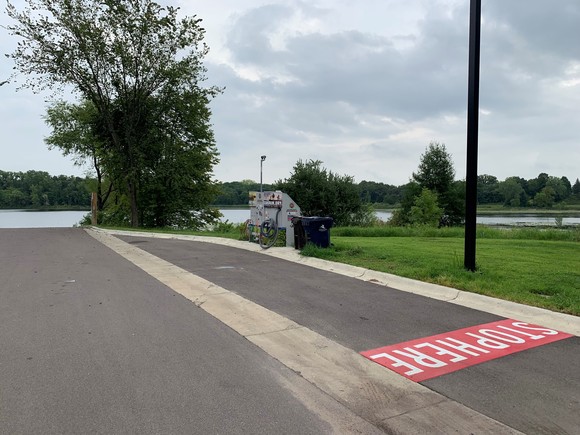 Bush Lake, City of Bloomington
Currently 77,863 tool uses have been recorded from the 18 CD3 (boat cleaning) stations spread throughout the county since the pilot project in 2017. Thank you for everyone that consistently takes these simple AIS prevention actions!
View this 30 second 2021 commercial about AIS prevention
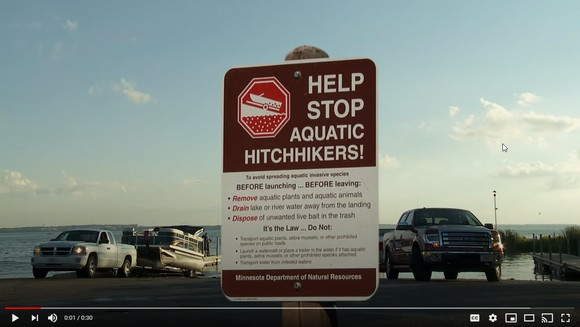
When is it extremely important to visit a decontamination station for a courtesy decontamination before visiting another lake?
- your boat has been in the water more than 24 hours
- your boat has ballast tanks
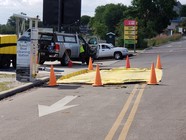
Boaters can have courtesy decontaminations done at dozens of locations around the state. The decontamination units and DNR-authorized watercraft inspectors can help you comply with invasive species laws and reduce the risk of spreading aquatic invasive species.
This map shows scheduled decontamination locations. The calendar feature searches availability on specific days. Additional dates will be added as the season progresses.
|
Before your visit
- Call the contact person listed for the site to confirm the unit is present.
- Arrive at least 30 minutes prior to the posted end time.
- If you are traveling with prohibited invasive species attached to your watercraft (such as zebra mussels) please print out and complete a permit before traveling.
Source: MNDNR website
Zebra mussels were recently found entangled in aquarium plants known as Marimo moss balls. These popular and interesting looking plants are a type of filamentous algae. They are a concern because disposal of aquarium water or the moss balls could inadvertently introduce zebra mussel adults or veligers (larvae) to natural waters. The DNR contacted Minnesota pet stores to inform them of the findings and remove them from sale until the problem can be resolved.
Photo credit: USGS
If you purchased a moss ball aquatic plant after February 1, 2021 follow this guidance (PDF) for disposal of the moss ball and cleaning of your aquarium.
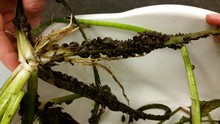
Zebra mussels are known to attach to plants found in lakes, streams and wetlands. If you are out boating or monitoring, check the plants you pull up on your anchor or rake sampler to see if there are any zebra mussels attached. Check your shoreline between or on top of rocks, on dead wood, and on dock posts or other solid surfaces. If you have a zebra mussel monitoring plate, now is a good time to hang it from your dock. Remember to check it every month, however, you will most likely not be able to detect zebra mussels until later in the summer.
Photo: zebra mussels attached to native lake plant
|
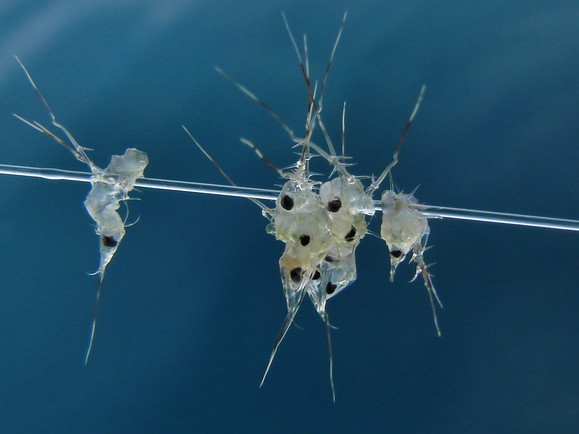 Spiny waterfleas on fishing line. Credit: J. Gunderson
A new movement is underway to stop the spread of spiny waterfleas. There is no control method for these microscopic critters once they are in a lake. Researchers have discovered that a dish cloth known as a Swedish dish cloth does the best job at removing spiny waterfleas from fishing lines and equipment.
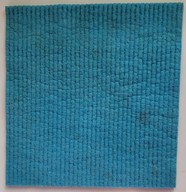
These sponge-like dish cloths absorb moisture and the spiny tail of the waterfleas don’t get hooked on them since they don’t have loops like fabric dish cloths. If you are visiting an infested lake, purchase one of these cloths at a kitchen store, gift shop or online and wipe down your fishing line and reels, and drain and wipe down live wells and bait buckets. Spiny waterfleas are larger zooplankton that have spiny tails that make them difficult for fish to eat. Although they are very small and clear, their black eye spot makes them more visible to the naked eye (see photo), especially when clustered on fishing line. Spiny waterflea infestations are currently found in northern and northeast Minnesota lakes. See what lakes are infested and learn more about spiny waterfleas at stopspiny.org.
|
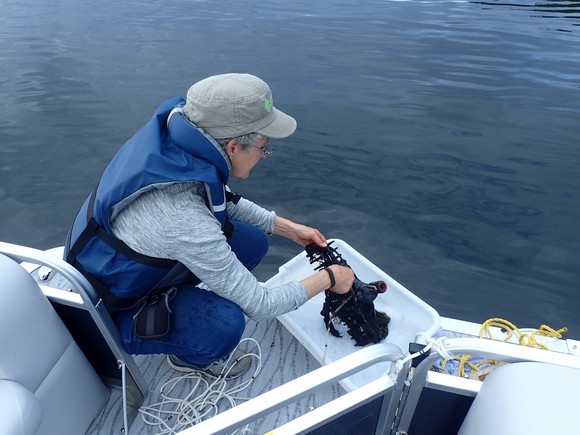
It’s not too early to search for AIS. Crayfish are active and many plants such as curly-leaf pondweed may be found. Zebra mussel monitoring plates can be installed at the end of the dock. Even if you are just out fishing or enjoying the lake in another way, take a few minutes to look for AIS along the shore, on a boat anchor or in the water. Aquatic plants will become more visible later in June through August. Hennepin County is offering some AIS technical assistance again this year. If you find a possible AIS or have questions, please contact Carolyn Dindorf at Carolyn@fortinconsulting.com or 612-220-4999. |
|
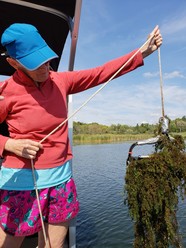 |
 |
Register now for the University of Minnesota Extension (UME) Aquatic Invasive Species (AIS) Detector Course. The AIS Detectors Core Course is an introduction to aquatic invasive species science, identification, and surveillance. You will learn how to report invasive species, best practices for preventing the spread of AIS, relevant rules and regulations, and how to search for AIS on your own. For 2021, there is an 8-hour self-paced online program followed by 2 virtual workshop sessions held in May or June.
The registration fee for the program is $150, and scholarships are available if financial help is needed. Learn more and register.
Hennepin County AIS training and technical assistance contacts:
- Tony Brough, Hennepin County AIS coordinator
- Carolyn Dindorf, Fortin Consulting, Inc.
|